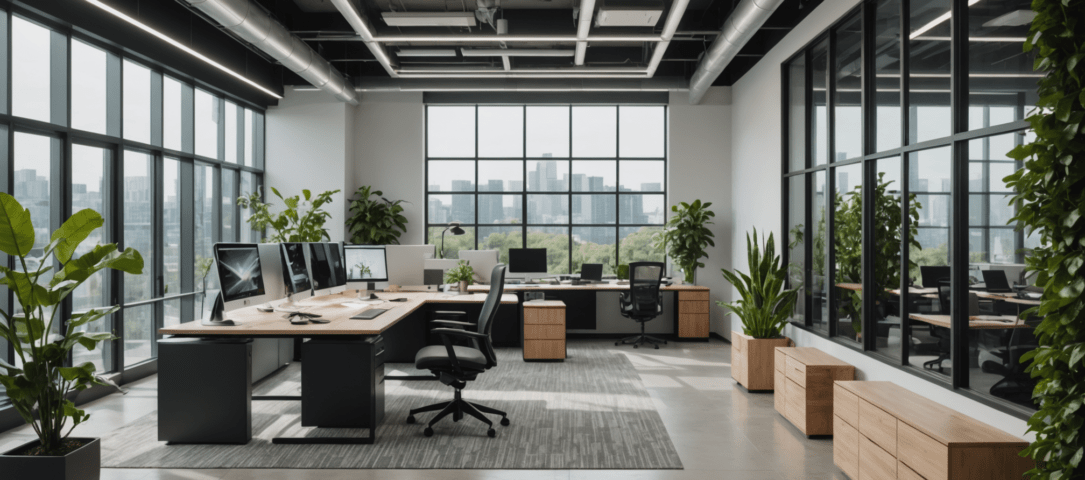
As employees return to the office in 2025, workplace design is no longer just about aesthetics—it's about creating spaces where people actually want to work. Years of remote and hybrid setups have changed what workers expect from their office environments. They want flexibility, comfort, and spaces that support both productivity and well-being.
Companies that invest in thoughtful design can boost employee engagement, collaboration, and even retention. From vibrant colors to multi-functional spaces, here are the biggest office design trends shaping workplaces in 2025.
Making the Office a Place Employees Want to Be
Many employees are hesitant to return to traditional office settings, so companies are reimagining workspaces to make them more inviting. One major shift is towards bolder, more energetic color schemes. While the past few years favored neutral, home-like tones, 2025 offices are embracing dynamic colors that stimulate creativity and motivation.
Another game-changing trend? Flexible, multi-use spaces. Instead of endless rows of desks, modern offices are blending open collaboration zones with quiet, private workspaces. Lounge areas, phone booths, and cozy seating options allow employees to choose where and how they work best.
Offices that offer variety—quiet corners for deep focus, social areas for teamwork, and comfortable seating for informal meetings—are proving to be the most effective in engaging employees.
Balancing Style and Functionality
A great-looking office isn’t enough—it needs to function well, too. Traditional conference rooms are making way for casual collaboration spaces, where employees can have quick discussions without booking a formal meeting room. Soft seating, acoustic panels, and whiteboards encourage spontaneous brainstorming sessions.
Dividers and partitions are also becoming smarter. Instead of dull cubicles, offices are using green walls and decorative panels to separate areas while adding natural elements. These features not only enhance the visual appeal but also improve air quality and employee well-being.
Budget-Friendly Office Updates That Make an Impact
Revamping an office doesn’t have to involve a full-scale renovation. Small, cost-effective changes can make a big difference:
- Accent walls & wallpaper — A bold feature wall can transform a space without breaking the budget.
- Lighting upgrades — Swapping outdated fixtures for modern LED lighting improves ambiance and reduces eye strain.
- Rearranging furniture — Simply rethinking layouts can make an office feel brand new.
Sometimes, the smallest updates—better lighting, ergonomic seating, or fresh colors—have the biggest impact on workplace energy and productivity.
Designing for Hybrid Work Habits
With many employees still splitting their time between home and the office, flexibility is key. Offices are adapting by incorporating:
- Hot-desking & reservable workstations — Employees can choose where they work each day, rather than having assigned desks.
- Varied seating options — High-top tables, cozy nooks, and shared spaces mimic the flexibility of working from home.
- Private pods & quiet zones — Ideal for focused tasks or video calls.
This approach makes offices more adaptable, catering to different work styles and preferences.
Prioritizing Comfort and Productivity
Office design directly impacts how employees feel and perform. More companies are turning to biophilic design, which integrates natural elements like plants, wood textures, and water features to create a soothing environment. Exposure to nature has been shown to reduce stress and boost focus.
Ergonomic furniture is another must-have. Sit-stand desks, adjustable chairs, and proper workstation setups help prevent discomfort, keeping employees productive throughout the day.
Acoustics also play a crucial role in modern office design. Open-plan spaces can get noisy, so offices are incorporating rugs, soft furnishings, and sound-absorbing panels to create a more focused and comfortable environment.
The Future of Office Design
As companies navigate the evolving work landscape, the best office designs will be those that blend flexibility, collaboration, and comfort. Workspaces are no longer just places to get tasks done—they're environments that should inspire creativity, teamwork, and well-being.
By incorporating thoughtful design elements like vibrant colors, ergonomic furniture, and adaptable layouts, companies can create spaces where employees don’t just work—they thrive. In 2025, the goal isn’t just to make offices functional, but to make them places people genuinely enjoy being in.

